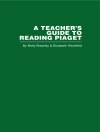‘The authors are highly respected as leading figures in the field of judgment and decision making. There are many existing books on topics related to judgment and decision making, but this book makes a unique contribution to this field because of its systematic and scholarly approach, and its breadth of coverage.’
—Robert Goldstone, Indiana University
‘Reid Hastie and Robyn Dawes are two of the most eminent researchers in the field. I know these authors to be excellent writers and I have no doubt that their writing style will be suitable for my students.’
—William Goldstein, University of Chicago
In the new edition of this award-winning text, renowned authors Reid Hastie and Robyn Dawes compare and contrast the basic principles of rationality with actual behavior in making decisions. This book explores theories and research findings from the field of judgment and decision making in a non-technical manner, using anecdotes as a teaching device. Intended as an introductory textbook for advanced undergraduate and graduate students, the material not only is of scholarly interest but is practical as well.
New to This Edition
- Chapter introductions, conclusions, and cross-references between chapters make the text more student friendly
- An abundance of examples from areas such as finance, medicine, law, and engineering anchor concepts to the real world
- Increased consideration of descriptive, psychological models of decision making augment the original emphasis on normative, rational, ‘Expected Utility Theory’ models, bring the book up to date
- Balance among the three major approaches to judgment and decision making: cognitive psychological analyses of mental processes and heuristics, descriptive algebraic models of judgment and decision processes, and rational models of decision making
विषयसूची
Chapter 1 – Thinking and Deciding
1.1 Decision Making Is a Skill
1.2 Thinking: automatic and Controlled
1.3 The Computational Model of the Mind
1.4 Through the Darkest Psychoanalytical Theory and Behaviorism to Cognition
1.5 Quality of Choice: Rationality
1.6 The Invention of Modern Decision Theory
Chapter 2 – What Is Decision Making?
2.1 Definition of a Decision
2.2 Picturing Decisions
2.3 Decision Quality, Revisited
2.4 Incomplete Thinking: A Legal Example
2.5 Over-Inclusive Thinking: Sunk Costs
2.6 The Rationality of Considering Only the Future
2.7 The Rest of This Book
Chapter 3 – A General Framework for Judgment
3.1 A Conceptual Framework for Judgment and Prediction
3.2 Research With the Lens Model Framework
3.3 Capturing Judgment in Statistical Models
3.4 How Do Statistical Models Beat Human Judgment?
3.5 Practical Implications of the Surprising Success of the Linear Model
3.6 Objections and Rebuttals
3.7 The Role of Judgment in Choices and Decisions
Chapter 4 – The Fundamental Judgment Strategy: Anchoring and Adjustment
4.1 Salient Values
4.2 Anchoring and (Insufficient) Adjustment
4.3 Anchoring on Ourselves
4.4 Anchoring the Past in the Present
Chapter 5 – Judging Heuristically
5.1 Going Beyond the Information Given
5.2 Estimating Frequencies and probabilities
5.3 Availability of Memories
5.4 Biased Samples in Memory
5.5 Biased Sampling From Memory
5.6 Availability to the Imagination
5.7 From Availability to Probablility and Causality
5.8 Judgment by Similarity: Same Old Things
5.9 Representative Thinking
5.10 The Ratio Rule
Chapter 6 – Explanation-Based Judgments
6.1 Everyone Likes a Good Story
6.2 The Conjunction Probabliity Error (Again)
6.3 Judging From Explanations
6.4 Legal Scenarios: The Best Story Wins in the Courtroom
6.5 Scenarios About Ourselves
6.6 Scenarios About the Unthinkable
6.7 Hindsight: Reconstructing the Past
6.8 Sometimes It′s Better to Forget
Chapter 7 – Chance and Cause
7.1 Misconceptions About Chance
7.2 Illusions of Control
7.3 Seeing Causal Structure Where It Isn′t
7.4 Regression Toward the Mean
7.5 Reflections on Our Inability to Accept Randomness
Chapter 8 – Thinking Rationally About Uncertainty
8.1 What to Do About the Biases
8.2 Getting Started Thinking in Terms of Probabilities
8.3 Comprehending the Situation Being Judged
8.4 Testing for Rationality
8.5 How to Think About Inverse Probabilities
8.6 Avoiding Subadditivity and Conjunction Errors
8.7 The Other Side of the Coin: The Probability of a Disjunction of Events
8.8 Changing Our Minds: Bayes′s Theorem
8.9 Statistical Decision Theory
8.10 Concluding Comment on Rationality
Chapter 9 – Evaluating Consequences: Fundamental Preferences
9.1 What Good is Happiness?
9.2 The Role of Emotions in Evaluations
9.3 The Value of Money
9.4 Decision Utility — Predicting What We will Value
9.5 Constructing Values
Chapter 10 – From Preferences to Choices
10.1 Deliberate Choices Among Complex Alternatives
10.2 Ordering Alternatives
10.3 Grouping Alternatives
10.4 Choosing Alternatives
10.5 How to Make Good Choices
Chapter 11 – A Rational Decision Theory
11.1 Formally Defining Rationality
11.2 Making Theories Understandable — The Axiomatic Method
11.3 Defining Rationality: Expected Utility Theory
11.4 Traditional Objections to the Axioms
11.5 The Shoulds and Dos of the System
11.6 Some Bum Raps for Decision Analysis
Chapter 12 – A Descriptive Decision Theory
12.1 Non-expected Utility Theories
12.2 Gain-Loss Framing Effects
12.3 Loss Aversion
12.4 Look to the Future
Chapter 13 – What′s Next? New Directions in Research on Judgment and Decision Making
13.1 The Neuroscience of Decisions
13.2 Emotions in Decision Making
13.3 The Rise of Experimental Methods to Study Dynamic Decisions
13.4 Do We Really Know Where We′re Headed?
Chapter 14 – In Praise of Uncertainty
14.1 Uncertainty as Negative
14.2 The Illusion of Hedonic Certainty
14.3 The Price of Denying Uncertainty
14.4 Two Cheers for Uncertainty
14.5 Living With Uncertainty












